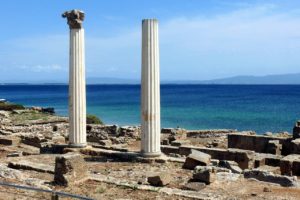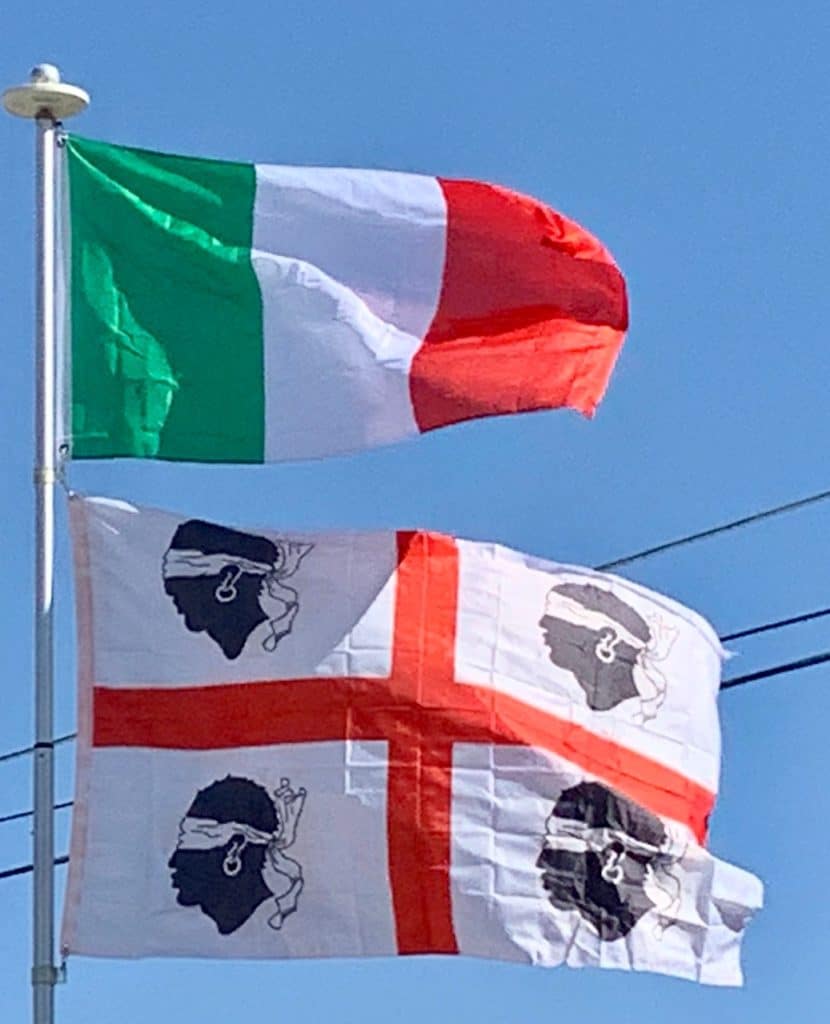In the 6th century BC, after the conquest of western Sicily, the Carthaginians planned to annex Sardinia. A first invasion attempt led by Malco was foiled by the victorious Nuraghic resistance. However, from 510 BC, the southern and west-central part of the island was invaded a second time and came under Carthaginian rule.

In 238 BC, taking advantage of Carthage having to face a rebellion of her mercenaries (the Mercenary War) after the First Punic War (264–241 BC), the Romans annexed Corsica and Sardinia from the Carthaginians. The two islands became the province of Corsica and Sardinia. They were not given a provincial governor until 227 BC. The Romans faced many rebellions, and it took them many years to pacify both islands. The existing coastal cities were enlarged and embellished, and Roman colonies such as Turris Lybissonis and Feronia were founded. These were populated by Roman immigrants. The Roman military occupation brought the Nuragic civilization to an end, except for the mountainous interior of the island, which the Romans called Barbaria, meaning “Barbarian land”. Roman rule in Sardinia lasted 694 years, during which time the province was an important source of grain for the capital. Latin came to be the dominant spoken language during this period, though Roman culture was slower to take hold, and Roman rule was often contested by the Sardinian tribes from the mountainous regions.
Vandal Conquest:
The east Germanic tribe of the Vandals conquered Sardinia in 456. Their rule lasted for 78 years up to 534, when 400 eastern Roman troops led by Cyril, one of the officers of the foederati, retook the island.

It is known that the Vandal government continued the forms of the existing Roman Imperial structure. The governor of Sardinia continued to be called the praeses and apparently continued to manage military, judicial, and civil governmental functions via imperial procedures. The only Vandal governor of Sardinia about whom there is substantial record is the last, Godas, a Visigoth noble. In AD 530, a coup d’état in Carthage removed King Hilderic, a convert to Nicene Christianity, in favor of his cousin Gelimer, an Arian Christian like most of the élite in his kingdom. Godas was sent to take charge and ensure the loyalty of Sardinia. He did the exact opposite, declaring the island’s independence from Carthage and opening negotiations with Emperor Justinian I, who had declared war on Hilderic’s behalf. In AD 533 Gelimer sent the bulk of his army and navy (120 vessels and 5,000 men) to Sardinia to subdue Godas, with the catastrophic result that the Vandal Kingdom was overwhelmed when Justinian’s own army under Belisarius arrived at Carthage in their absence. The Vandal Kingdom ended and Sardinia was returned to Roman rule.
Byzantine Era and the Rise of the Judicates:
In 533, Sardinia returned to the rule of the Byzantine Empire when the Vandals were defeated by the armies of Justinian I under the General Belisarius in the Battle of Tricamarum, in their African kingdom; Belisarius sent his general Cyril to Sardinia to retake the island. Sardinia remained in Byzantine hands for the next 300 years aside from a short period in which it was invaded by the Ostrogoths in 551.
